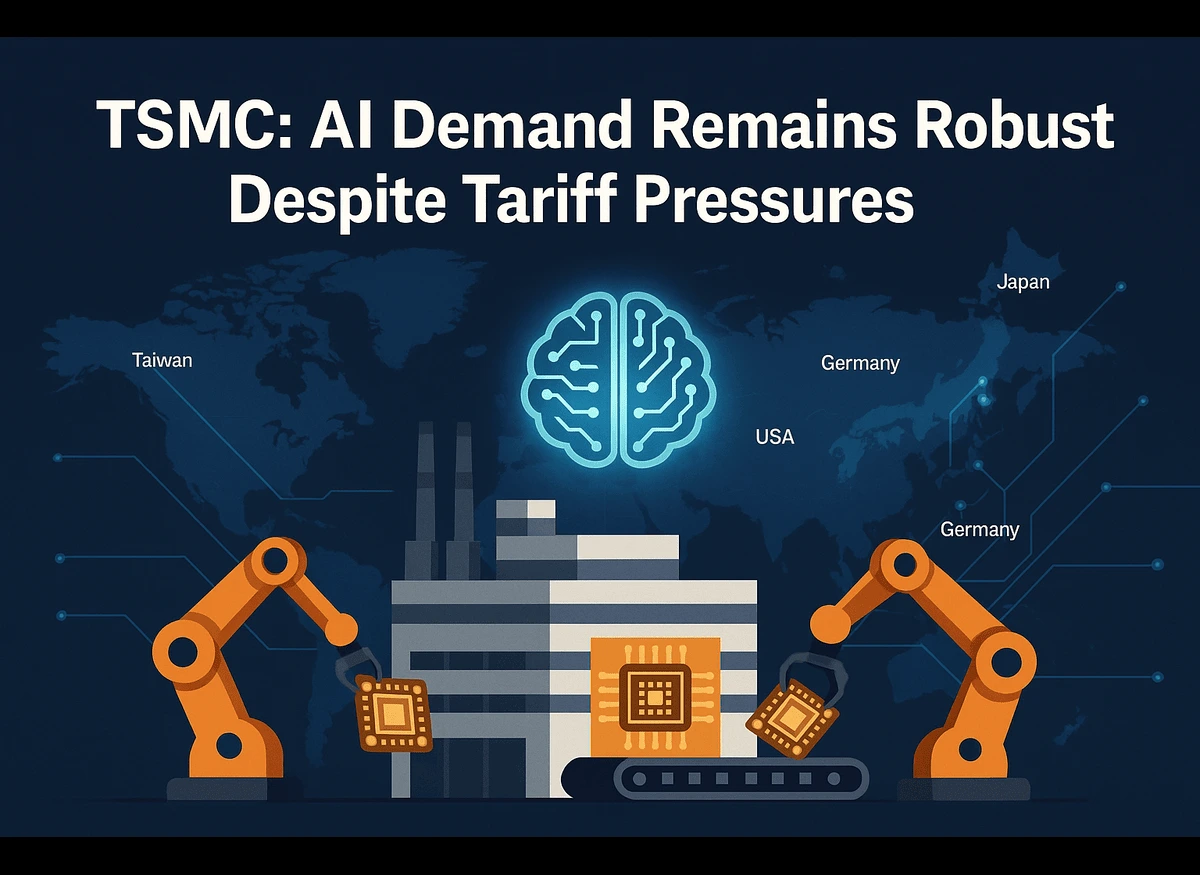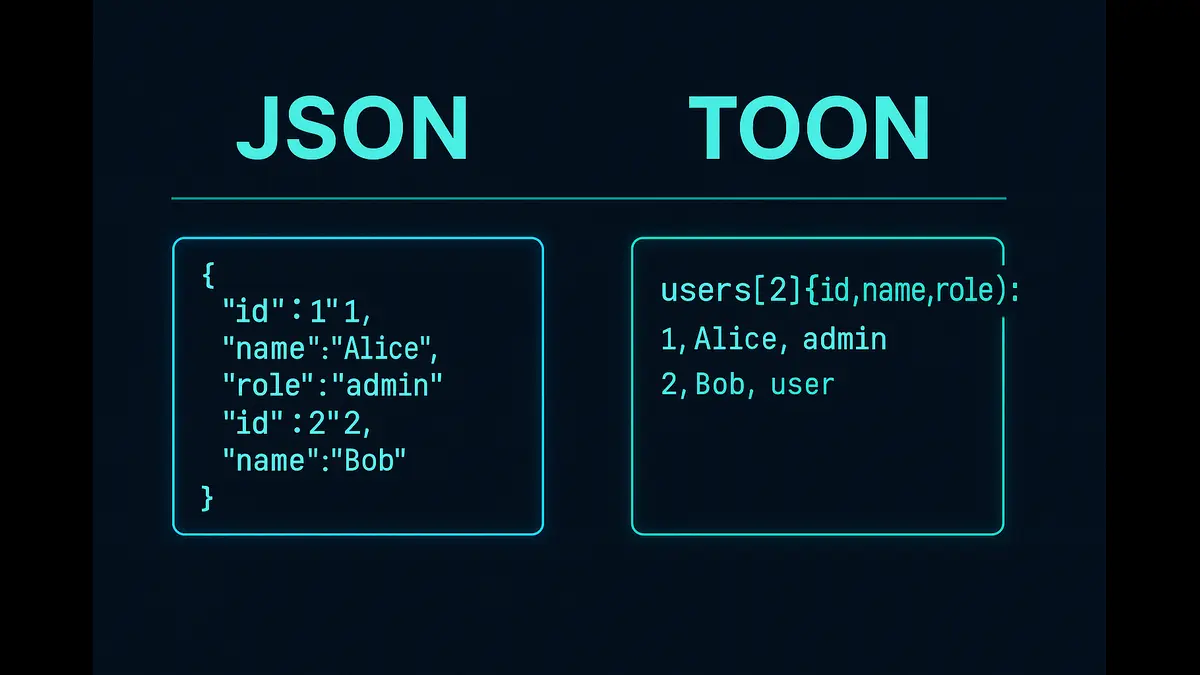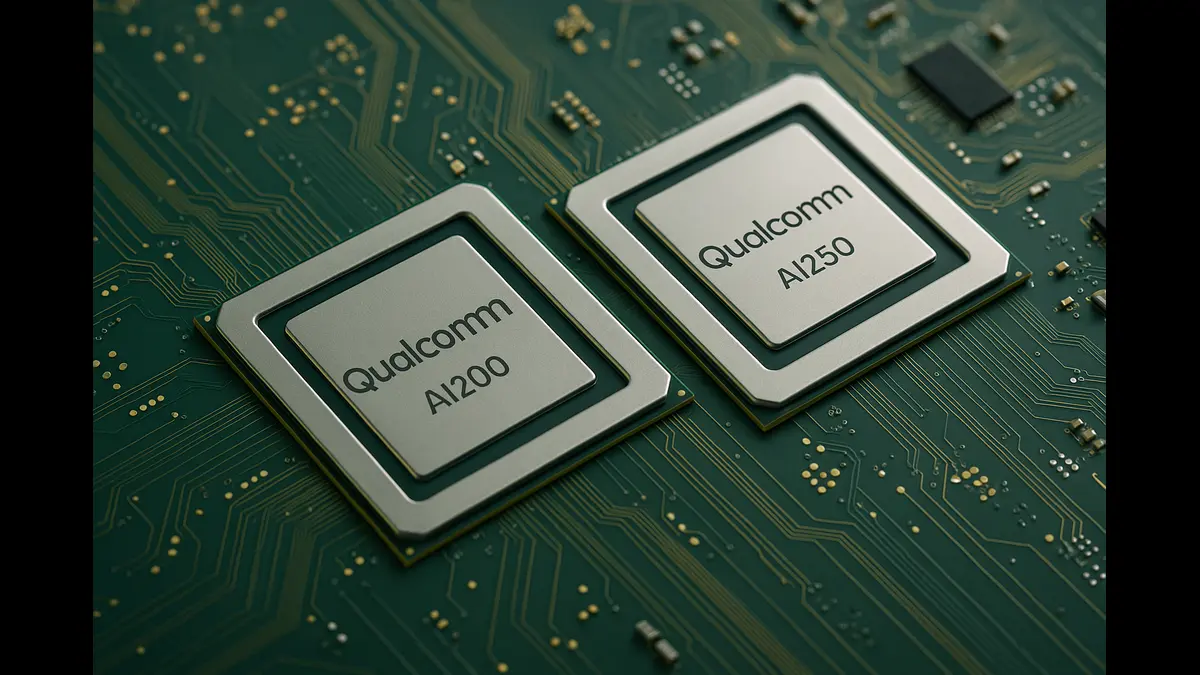
TSMC rides the AI wave with record-breaking growth, shrugging off tariff concerns through strategic global expansion and advanced chipmaking prowess.
This article provides a detailed examination of TSMC’s current position, focusing on its resilience in the face of trade challenges, its pivotal role in the AI ecosystem, and its strategic responses to market dynamics.
Taiwan Semiconductor Manufacturing Company (TSMC), the world’s largest contract chip manufacturer, continues to navigate a complex global trade environment while capitalizing on the surging demand for artificial intelligence (AI) chips. At its annual shareholders meeting held on June 3, 2025, in Hsinchu, Taiwan, TSMC’s Chief Executive Officer, C.C. Wei, addressed the impact of U.S. tariffs on the company’s operations and reaffirmed its bullish outlook driven by robust AI demand.
TSMC’s Market Position and AI-Driven Growth
TSMC stands as a cornerstone of the global semiconductor industry, producing advanced chips for major technology companies such as Apple, Nvidia, AMD, Qualcomm, and Broadcom. Its dominance in manufacturing high-performance computing (HPC) chips, particularly those used in AI applications, has positioned it as a pioneer for the industry. In 2024, TSMC reported a record-breaking annual revenue of NT$2.9 trillion (approximately $88 billion), driven by a 38.8% year-on-year increase in fourth-quarter revenue to NT$868.46 billion ($26.36 billion) and a 57% rise in net income to NT$374.68 billion. These figures surpassed analyst expectations, underscoring the company’s ability to capitalize on the AI megatrend.
The demand for AI accelerators, which accounted for a mid-teens percentage of TSMC’s total revenue in 2024, is projected to double in 2025. CEO C.C. Wei emphasized that AI-related demand “has always been very strong and consistently outpaces supply,” highlighting the company’s challenge to scale production to meet customer needs. TSMC’s advanced 3-nanometer and 5-nanometer process technologies, critical for AI and smartphone applications, have been key drivers of this growth.
Impact of U.S. Tariffs on TSMC’s Operations
U.S. trade policies, particularly under President Donald Trump’s administration, have introduced uncertainty into the global semiconductor market. Tariffs on semiconductor imports, alongside broader reciprocal levies, pose potential challenges for TSMC, which operates primarily as an exporter. At the shareholders meeting, Wei clarified that tariffs impact TSMC indirectly, as they are imposed on importers rather than exporters. However, he acknowledged that “tariffs can lead to slightly higher prices, and when prices go up, demand may go down.” Despite this, TSMC has observed no significant changes in customer behavior due to tariff uncertainty, suggesting that the AI-driven demand remains resilient.
In April 2025, TSMC reported a 42% increase in quarterly revenue to NT$839.25 billion ($25.5 billion), exceeding analyst expectations of NT$830.5 billion. This growth was attributed to stockpiling by electronics manufacturers in anticipation of potential trade disruptions, as well as sustained demand for AI servers and smartphones. The company maintained its full-year revenue growth forecast of 20% to 30%, with second-quarter revenue expected to range between $28.4 billion and $29.2 billion, compared to $20.8 billion in the same period the previous year. TSMC’s ability to pass on tariff-related price increases to customers, as noted by Gary Tan, a portfolio manager at Allspring Global Investments, underscores its strong market position.
Strategic Investments and Global Expansion
To meet soaring demand and mitigate geopolitical risks, TSMC is significantly expanding its global manufacturing footprint. The company is investing $65 billion in three fabrication plants (fabs) in Arizona, USA, with the first fab set to begin production in 2025, the second in 2028, and the third by the end of the decade. In March 2025, TSMC and President Trump jointly announced an additional $100 billion investment in U.S. chipmaking, aligning with the White House’s goal of reshoring semiconductor manufacturing. This brings TSMC’s total U.S. investment to $165 billion, a strategic move to reduce supply chain risks for customers like Qualcomm and AMD.
TSMC is also constructing fabs in Japan and Germany. In Kumamoto, Japan, its first specialty technology fab is set to begin production in the fourth quarter of 2025, with a second fab planned to support consumer, automotive, industrial, and HPC applications. In Dresden, Germany, volume production is scheduled for 2027. These investments reflect TSMC’s commitment to diversifying its manufacturing base while maintaining Taiwan as its primary production hub. Despite media reports suggesting potential factories in the United Arab Emirates, Wei firmly stated that TSMC has no plans for such facilities in the Middle East.
Challenges and Headwinds
Despite its strong performance, TSMC faces several challenges. U.S. export controls on advanced semiconductors to China have reduced TSMC’s revenue from the Chinese market to 7% of total sales in the first quarter of 2025, down from 9% the previous year. In contrast, North America accounted for 77% of revenue, up from 69%, reflecting a shift in market dynamics. Additionally, foreign investors sold $8.66 billion worth of TSMC shares in 2025, according to Goldman Sachs, driven by concerns over AI infrastructure spending and competitive threats from Chinese startups like DeepSeek, which are developing cheaper AI models.
The potential for tariffs to disrupt end-market demand remains a concern. While TSMC has not yet seen changes in customer behavior, Wei noted that the situation may become clearer in the coming months. Furthermore, progress on TSMC’s Arizona fabs has faced delays due to regulatory complexities and a shortage of specialized labor, though advancements are ongoing. These challenges highlight the delicate balance TSMC must maintain between expanding capacity, managing costs, and navigating geopolitical uncertainties.
TSMC’s Competitive Advantage
TSMC’s ability to weather tariff pressures and sustain growth is rooted in its technological leadership and operational efficiency. The company’s advanced process technologies, such as 2-nanometer chips, position it at the forefront of the AI and smartphone markets. Approximately 30% of its capacity for these cutting-edge chips will be located in Arizona, enhancing its ability to serve U.S.-based customers. TSMC’s investments in AI and machine learning for its own manufacturing processes further improve yield rates and production efficiency.
The company’s strong relationships with major clients like Nvidia and Apple provide a stable revenue stream, while its diversified customer base mitigates risks associated with market fluctuations. TSMC’s decision not to engage in joint ventures or technology sharing, as clarified by Wei in response to rumors about a potential partnership with Intel, underscores its focus on maintaining proprietary control over its advanced manufacturing processes.
Outlook and Implications for the Semiconductor Industry
TSMC’s outlook remains optimistic, driven by the unrelenting demand for AI chips. The company’s forecast of doubling AI chip revenue in 2025, coupled with its strategic investments in global manufacturing, positions it to maintain its leadership in the semiconductor industry. While tariffs introduce some uncertainty, TSMC’s role as an exporter and its ability to pass on price increases provide a buffer against potential demand fluctuations.
For business leaders and investors, TSMC’s resilience offers valuable insights. The company’s ability to navigate trade tensions while capitalizing on the AI boom highlights the importance of technological innovation and strategic diversification. As AI continues to transform industries, TSMC’s investments in advanced manufacturing and global expansion will likely solidify its position as a critical enabler of technological progress.
TSMC’s performance in 2025 demonstrates its ability to thrive in a challenging global environment. Despite indirect impacts from U.S. tariffs, the company’s focus on meeting robust AI demand, coupled with its strategic investments in the U.S., Japan, and Germany, ensures its continued dominance in the semiconductor industry. By maintaining technological leadership and operational flexibility, TSMC is well-positioned to address future challenges while driving the next wave of AI innovation.
Discover more from Poniak Times
Subscribe to get the latest posts sent to your email.







